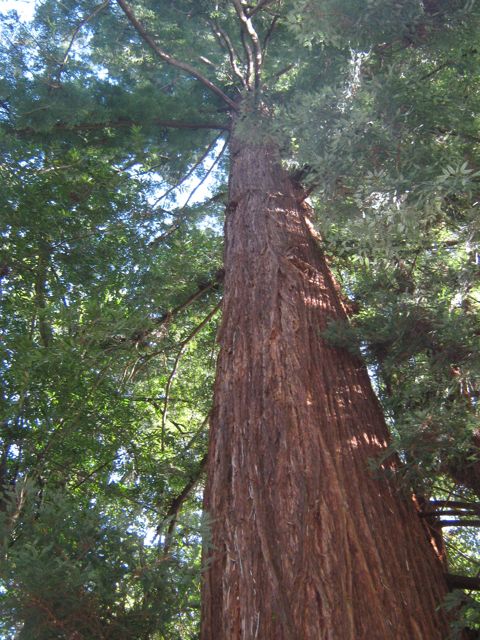Today is Arbor Day. Frankly, I am a bit sad. Why?
First of all, I am sad because this year my parents decided to log the small woods that is on their property. They knew I wouldn’t be happy, so they didn’t let it slip until it was already done. And they were right. I felt loss for the walnuts and oaks who had been standing since as long as I can remember. I miss them.
Arbor day also reminds me of the story of Herbie the elm tree, which is a poignant one. Rambling Woods has a good summary of the Herbie story.
Maybe I miss the trees more because here in the desert trees are small and shrubby. A big tree is a rare and beautiful sight.

In any case, a book that came in the mail this week struck a chord with me.
I will say up front that this is an adult book, it is not written for children.
Keepers of the Trees:Â A Guide to Re-Greening North America by Ann Linnea has the details right. It is printed on recycled wood-free paper. 
Linnea writes about the stories of fourteen men and women who are dedicated to conserving trees, including herself. She includes people from a diversity of outlooks, races, genders, lifestyles and backgrounds, all brought together by their love of trees.
The author has a compelling writing style and sets just the right tone. The book isn’t preachy or heavy-handed at all. Basically, it is about the people and their work.
People like Corella Payne, who researches public health issues such as asthma for her job, and then volunteers as a Treekeeper for public parks during her off hours. Corella sees the link between being outside with nature, and overall health and well-being.
The story of Merve the logger stands out in my mind because of my recent experiences. Merve has been selectively and sustainably logging the same spot in Canada for years. Although he has removed the same amount of timber that he would have gotten if he had simply clear cut, the forest remains in place, still viable and diverse. He respects the soil, leaves natural drainage systems intact and tries to take trees that are mostly at the end of their natural life cycle. Inspiring!
The layout of Keepers of the Trees is visually appealing, with many color photographs and figures. In the back is a list of practical things that you can do if you are interested in “tree-keeping.” Suggestions include planting a tree, adopting a tree, and mentoring a child.
I think I will take up that suggestion to mentor a child by taking my son to see another cork oak I found out about recently. Seems like the right thing to do on Arbor Day.
And if you are interested in helping a child learn more about trees, check my review of the Leaf and Tree Guide at Wrapped in Foil.
Edit: Tricia has a fabulous list of children’s books about trees at The Miss Rumphius Effect.
What are you doing for Arbor Day?
Please read the disclosure page for information about my affiliation with Amazon. Book was provided by publisher.









